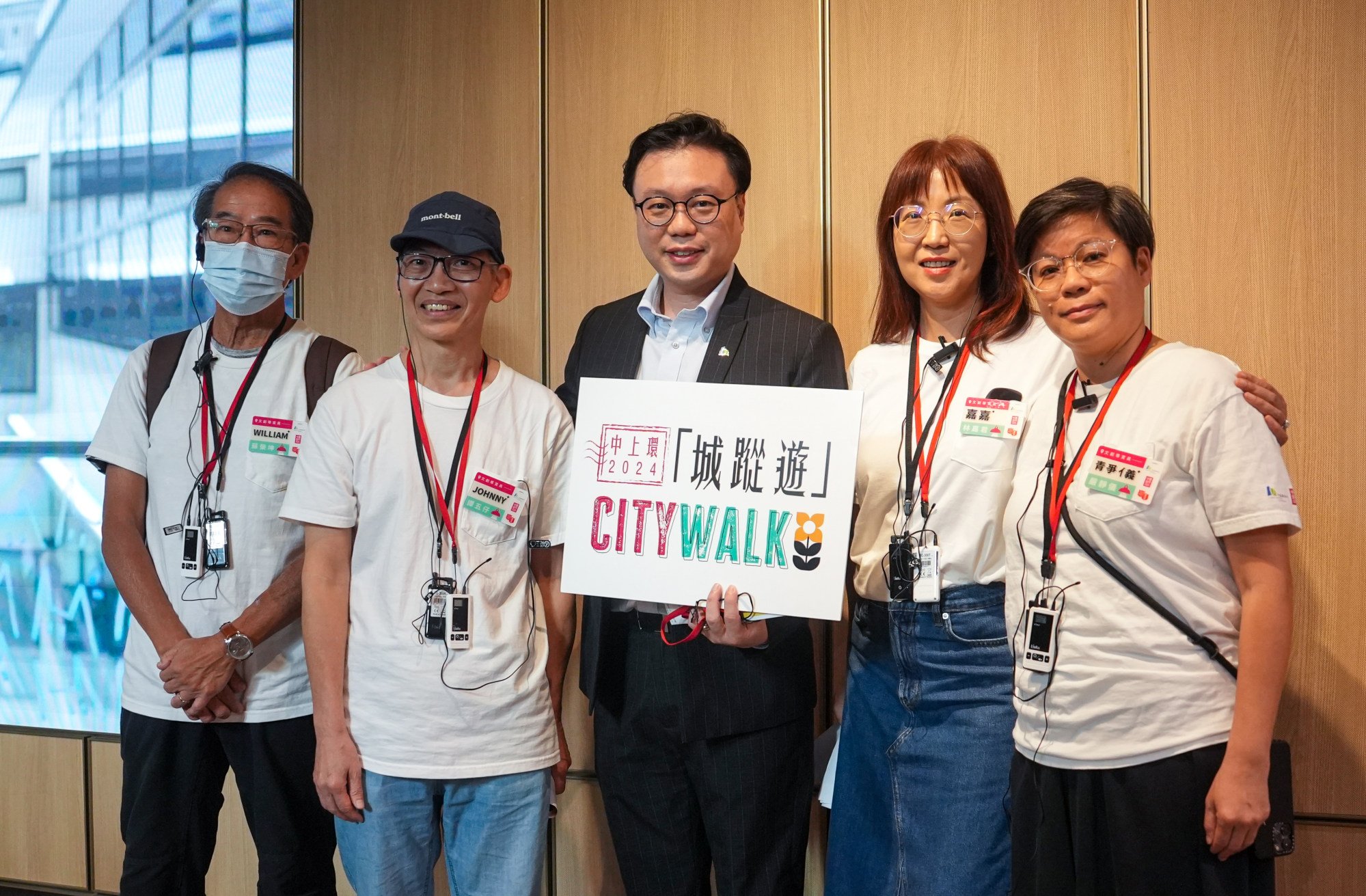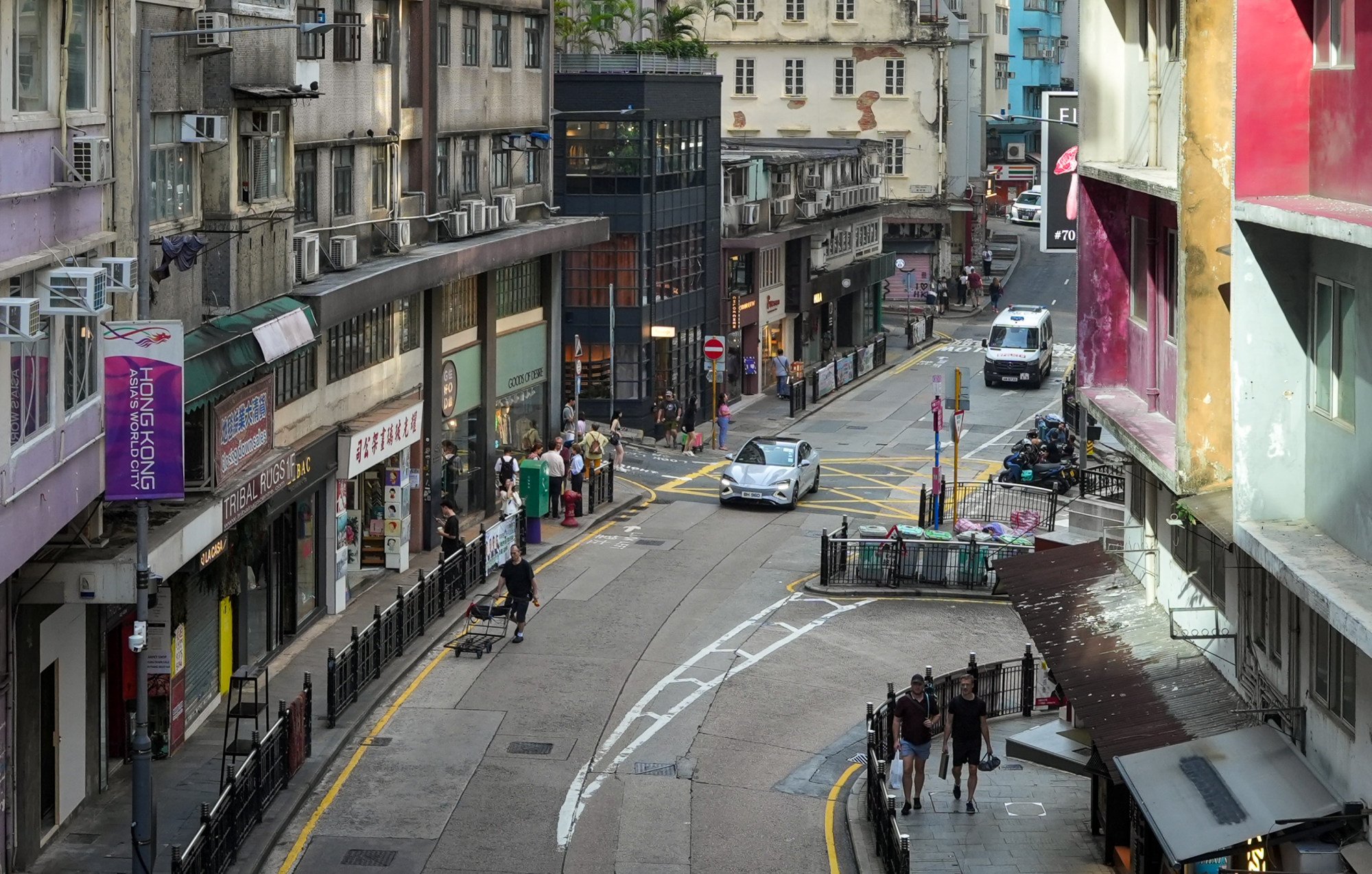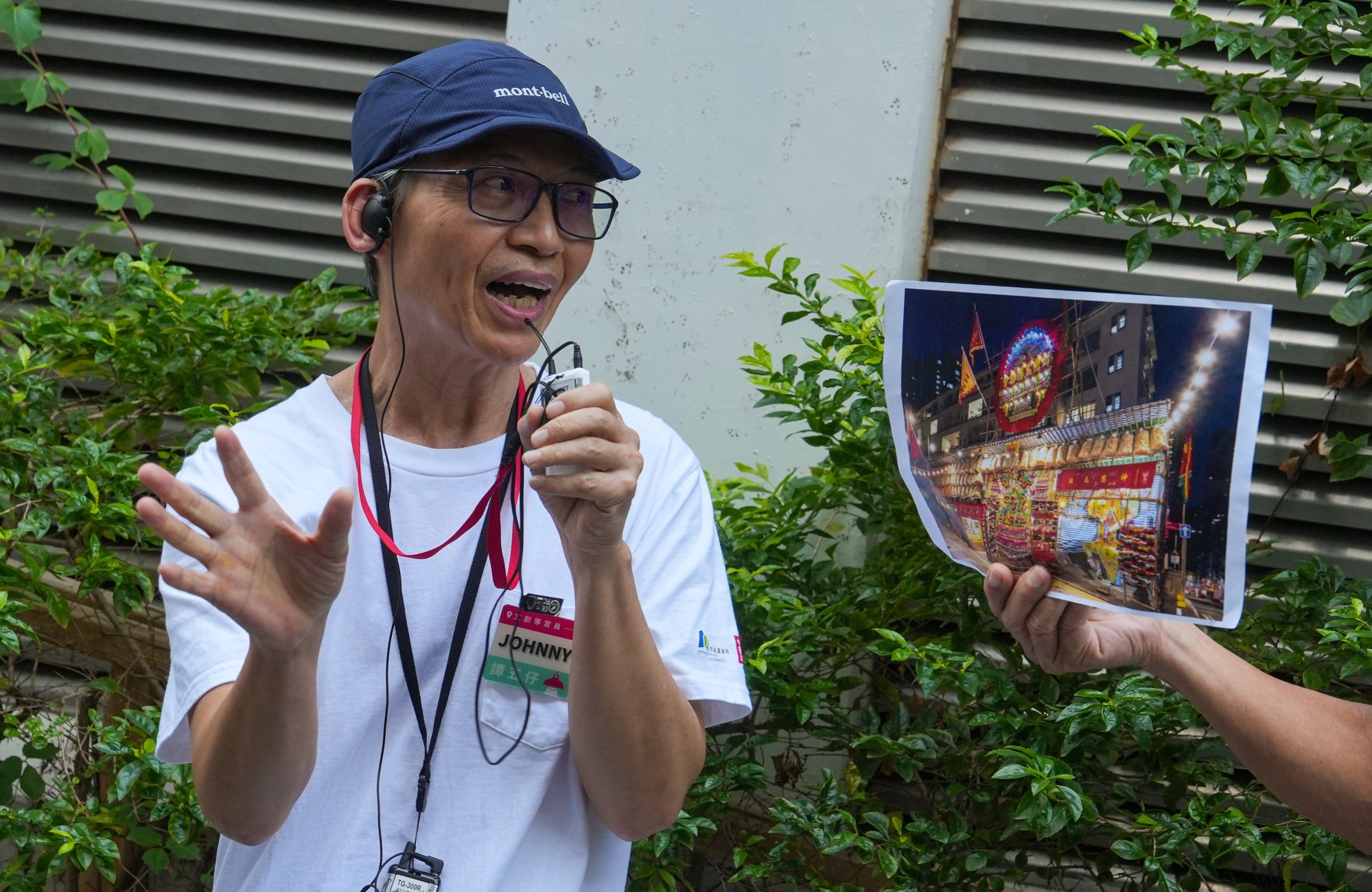Hong Kong’s Urban Renewal Authority has launched free tours after recruiting retired volunteers to tell residents first-hand stories about Central and Sheung Wan districts, paving the way for more in-depth offerings for visitors.
The “Touring Central with Locals” walks also feature digital art integration at five locations where the authority applied augmented reality (AR) technology to enhance interaction and also create popular photo spots.
More than 40 guided tours will be offered to about 500 residents until the middle of January. Around 60 guides have been recruited for the free tours, which run three days a week and started on Saturday.
Do you have questions about the biggest topics and trends from around the world? Get the answers with SCMP Knowledge, our new platform of curated content with explainers, FAQs, analyses and infographics brought to you by our award-winning team.
Ernest Cheng Hin-kong, the authority’s general manager of property and land, said the tours were currently only open to locals but the authority would work with the Hong Kong Tourism Board, which could consider making plans to offer tours to tourists.
“This is a successful formula which is suitable for bringing out the vitality of a district together with the locals,” he said.
Boosting tourism was one of the focuses of Chief Executive John Lee Ka-chiu’s policy address last month.

He said the government aimed to develop the city into a premier destination by utilising its unique resources such as cultures, cuisines and historic buildings, to help to instil the concept of “tourism is everywhere in Hong Kong”.
The concept was earlier put forward by Xia Baolong, Beijing’s point man on Hong Kong affairs, who noted tourism development was highly important for driving economic growth and urged local authorities to revitalise the city’s offerings.
The tours under the authority’s “City Walk” programme mainly feature its urban renewal projects in Central and Sheung Wan including buildings, streets and shops.
Cheng said a major feature of the tours was the volunteer guides, who are aged 55 and above and grew up, lived or worked in Central and Sheung Wan.
They received 30 hours of training and were divided into teams of four.

Each team designed its own tour routes based on members’ unique experiences and personal connection to the area, focusing on four themes of historic architecture, cuisines, arts and culture, as well as films.
“The biggest characteristic of the tours is the docents who all have their own experiences and stories to tell about the area,” Cheng said.
Retiree Johnny Tam Ng-chai, 64, worked with Pat Lam Ka-kwan, 58, Yim Ching-yee, 56, and William So Wing-kwan, 71, to design a route that starts from Central Market and takes people on an exploration of lively local life along the way.
Tam, who previously worked at a bank in Central, said he was familiar with the area and hoped to tell his first-hand stories of the place to others.
“I have had so many footprints in this area,” Tam said. “I hope to give others an extraordinary experience.”
The four tell stories about the route’s attractions, including the famous 800-metre-long Central-Mid-Levels escalator that opened in 1993, from which people can also see a cluster of dai pai dong – open-air food stalls – that are tucked away in alleys.

Also featured on the tour is Hollywood Road, one of Hong Kong’s oldest paved roads that stretches 1km between Central and Sheung Wan. The 180-year-old road was named the second-coolest street in the world for 2024 by magazine Time Out after Melbourne’s High Street.
Three spots on the route are available for people to scan a QR code on mobile phones and tablets computers for AR images, such as a rotary telephone and compact disc at the main staircase of Central Market, a cat on Graham Street “to chase away mice”, and past images of the 30 Houses Neighbourhood.
The authority invited the China Academy of Art to create five new AR spots, using digital art that combined a visual positioning system, to enhance the tour experience.
The tours, held in four phases and running on Tuesdays, Thursdays and Saturdays, received applications from about 870 residents and eight groups for the first stage.
Cheng said the authority would consider expanding tours to other districts later.
More from South China Morning Post:
- Hong Kong urged to fully exploit potential of islands and coastline for tourism
- Hong Kong tourism industry eyes ethnic minority recruits to welcome Muslim visitors
For the latest news from the South China Morning Post download our mobile app. Copyright 2024.





